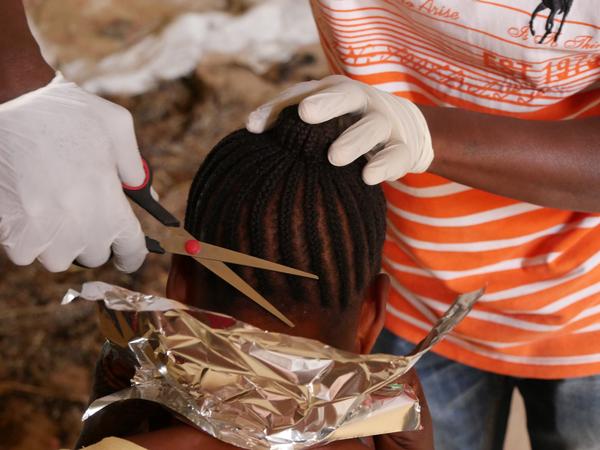Identifying pesticides in hair

© 2016 EPFL
Summer series on student projects – For her Master’s project in environmental sciences, Christelle Oltramare collected 110 hair samples in Burkina Faso and came up with a process for identifying several types of pesticides.
She left with an empty suitcase and came back with one full of hair! Christelle Oltramare decided to do her Master’s project - EPFL Central Environmental Laboratory - in Burkina Faso – somewhat off the beaten path. For two months, she took hair samples from volunteers in several villages in order to measure how farmers are affected by their livelihood. She also wanted her research to include people who were not in direct contact with pesticides.
 “I did an internship last summer in occupational health, and I was really fascinated to discover how the environment can affect human health. Working with hair was an interesting new approach.” Many pesticides are known for being endocrine disruptors, or are assumed or known carcinogens. These toxic compounds are found in the environment, water and food.
“I did an internship last summer in occupational health, and I was really fascinated to discover how the environment can affect human health. Working with hair was an interesting new approach.” Many pesticides are known for being endocrine disruptors, or are assumed or known carcinogens. These toxic compounds are found in the environment, water and food.
Burkina Faso does not have the same regulations or oversight that Switzerland does when it comes to using dangerous products. “Most of the farmers don’t know how to read and they don’t differentiate – a pesticide is a pesticide whether it's meant for cotton or vegetables. And they often apply the same quantity of the product to their patch of land – measuring no more than 100 square meters – that an industrial farm would use for a hectare.”
 Hair can now be analyzed for trace amounts of drugs, and there is a protocol. But in the absence of an accepted procedure for identifying pesticides, Oltramare took a method of extracting pesticides from fruits and vegetables and applied it to hair.
Hair can now be analyzed for trace amounts of drugs, and there is a protocol. But in the absence of an accepted procedure for identifying pesticides, Oltramare took a method of extracting pesticides from fruits and vegetables and applied it to hair.
She had to play with several parameters in order to properly analyze the samples, washing the hair first to remove any dust and then dipping the hair into a solvent for the purposes of extraction. “We ran several trials to find the best solvent and the best phase for purification while at the same time ensuring no fatty acids remained in our sample and spoiled the analysis.”
 She analyzed 73 samples. Her results showed that people are exposed to a number of pesticides, and that this is not due solely to their work. The farmers are affected the most, but the village's inhabitants were also exposed to pesticides through other vectors, like food and water.
She analyzed 73 samples. Her results showed that people are exposed to a number of pesticides, and that this is not due solely to their work. The farmers are affected the most, but the village's inhabitants were also exposed to pesticides through other vectors, like food and water.


